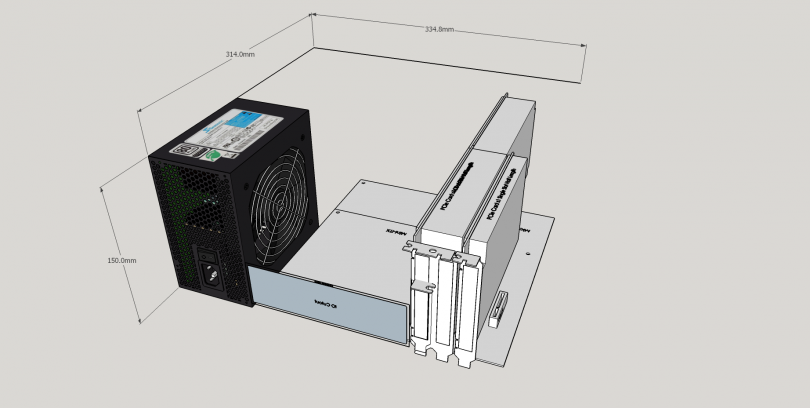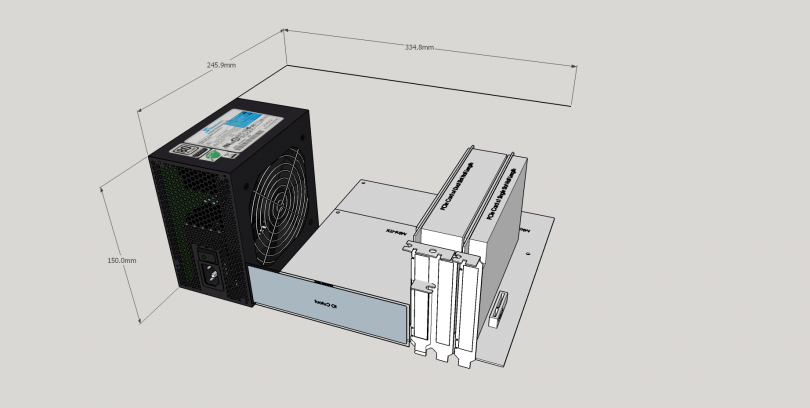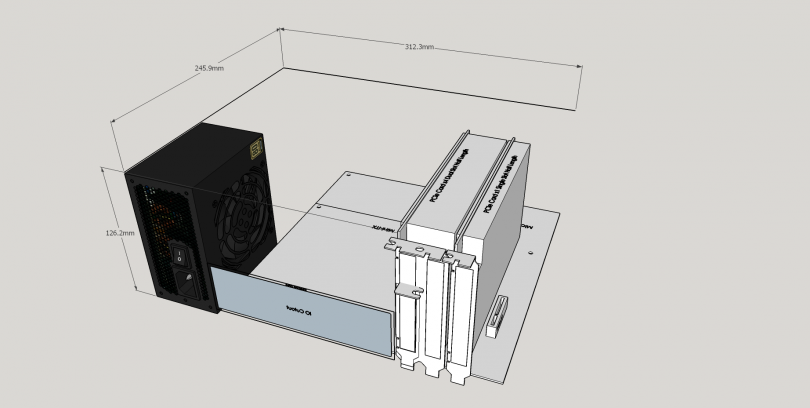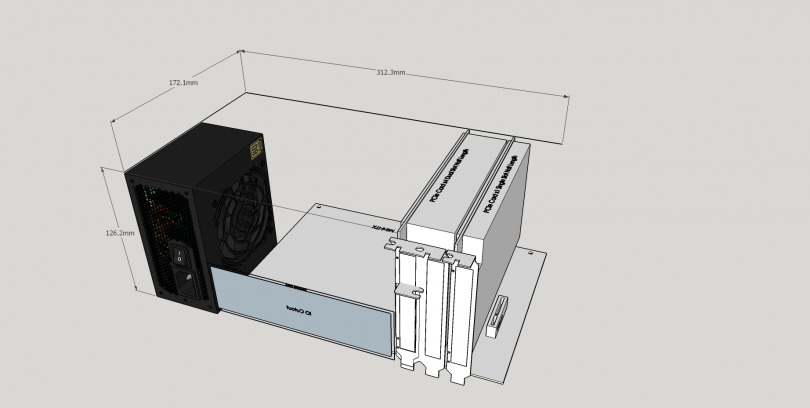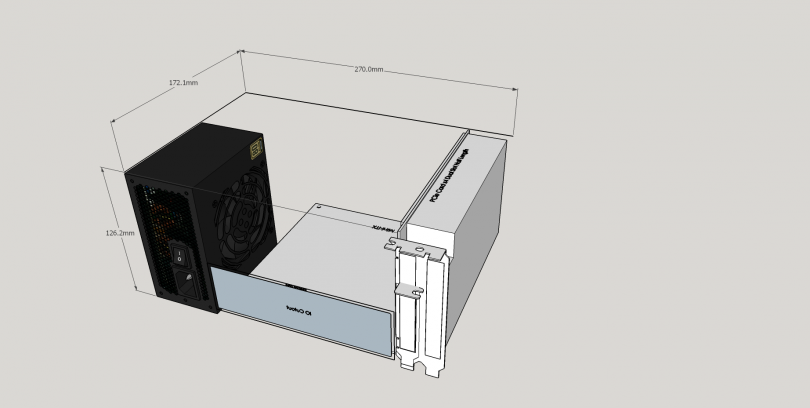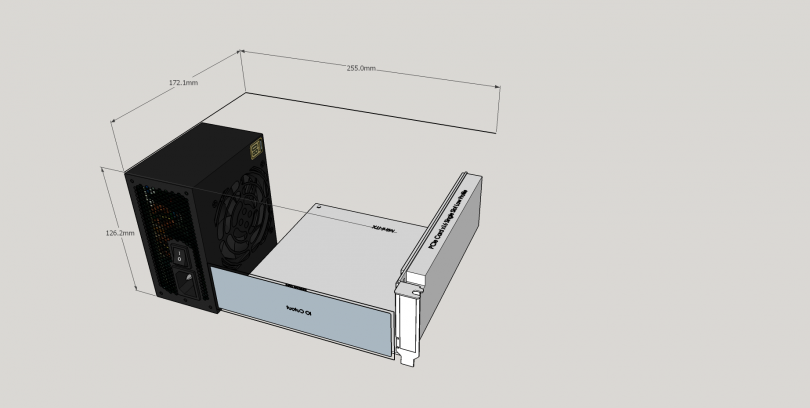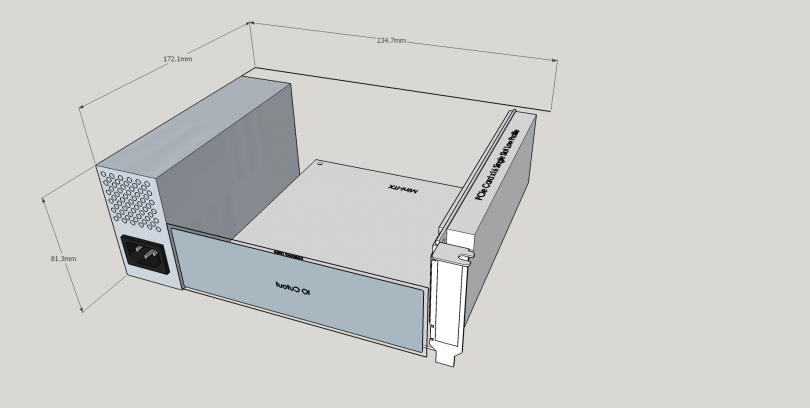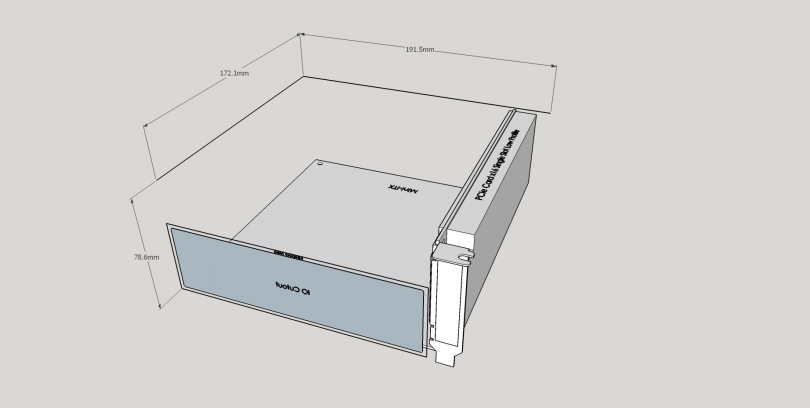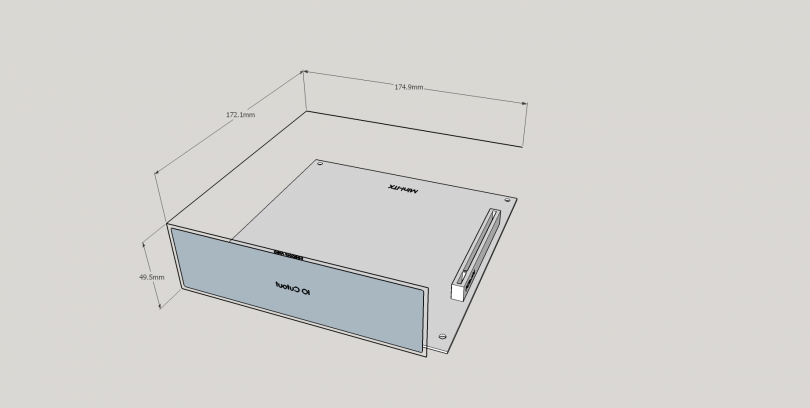Small Form Factor is a challenge to a large part of the community – how small can you build? I set out to find out (with the help of Sketchup) how small can you really build with M-ATX? M-ITX? Let’s go…
Throughout this article I will be using standard component sizes and measuring internally. When taking into account materials, component tolerances, manufacturing tolerances and design elements, the size can grow markedly from the internal volume. I haven’t covered all possible layouts, but it should give you an idea what to consider. I’m ignoring drives for this, as this is only a guide.
The above is your normal mid-sized configuration. ATX power supply, full width motherboard, full length graphics card. A total internal volume of 15.77 litres.
This layout, with regular length graphics cards, comes in at 12.35 litres.
Moving down to a SFX power supply, we drop down to single digits – 9.69 litres.
Now, time to really drop that volume. Moving to a M-ATX board of a smaller width, we can get down to 6.78 litres.
M-ITX time! Just under a litre down on the previous iteration, at 5.86 litres.
Single slot graphics takes us to 5.53 litres.
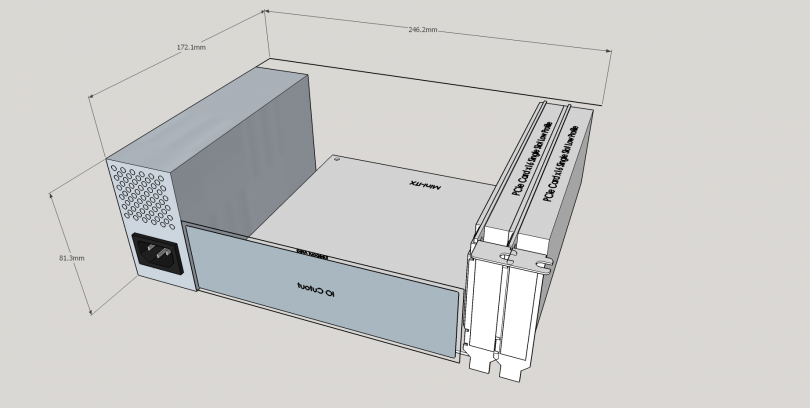
With cards like the low profile, dual slot GTX750Ti, we have around 3.45 litres.
Flex-ATX power supply installed and we’re down to 3.28 litres.
2.59 litres. The use of a Pico-PSU or similar with an external AC-DC brick can take us to this size. As small as you can get without risers, but still with discrete graphics.
No GPU. 1.49 litres.
Keep in mind that cooling is paramount in such small builds. You can find many CPU coolers that will fit in each build, but you may have to sacrifice overall performance to make it all work. Nobody wants a CPU that idles above 50 degrees Celsius!
In a future article, I will show you a few different layouts, with the power supply in non-standard locations.
[mks_separator style=”blank” height=”2″]
Thoughts? Discuss them here.

